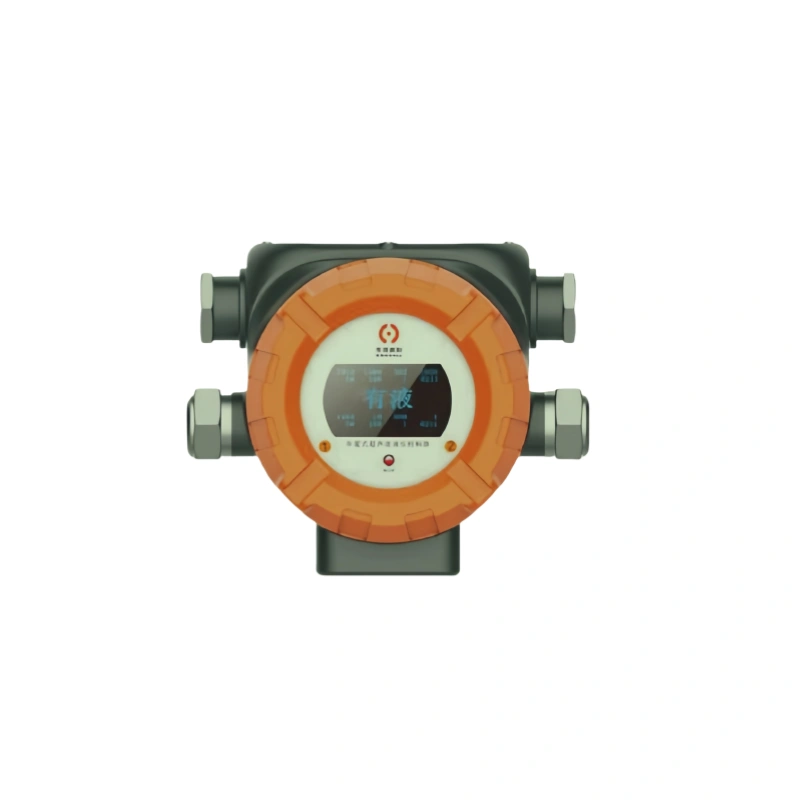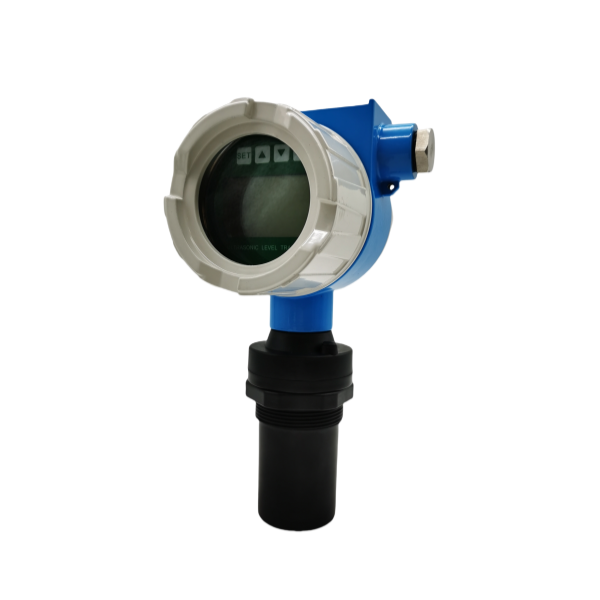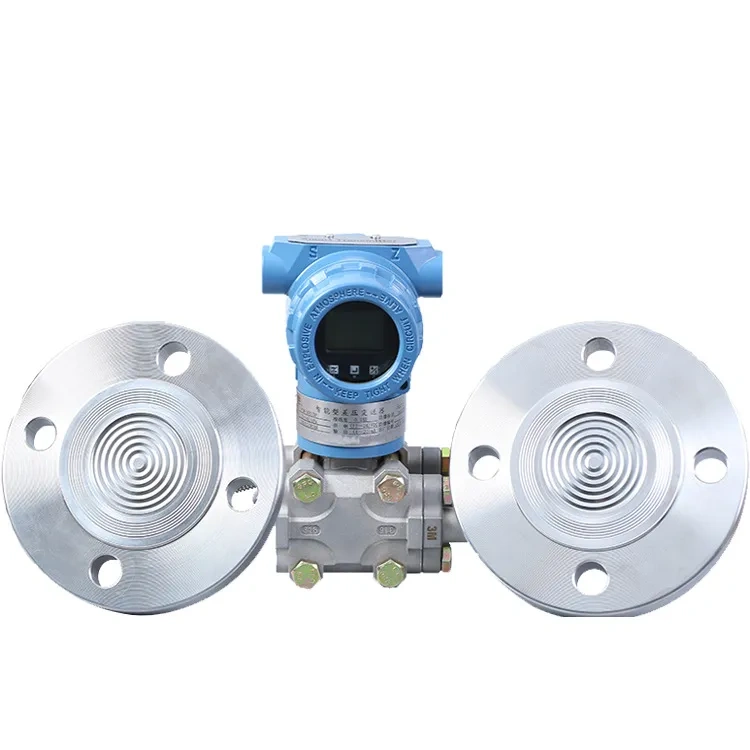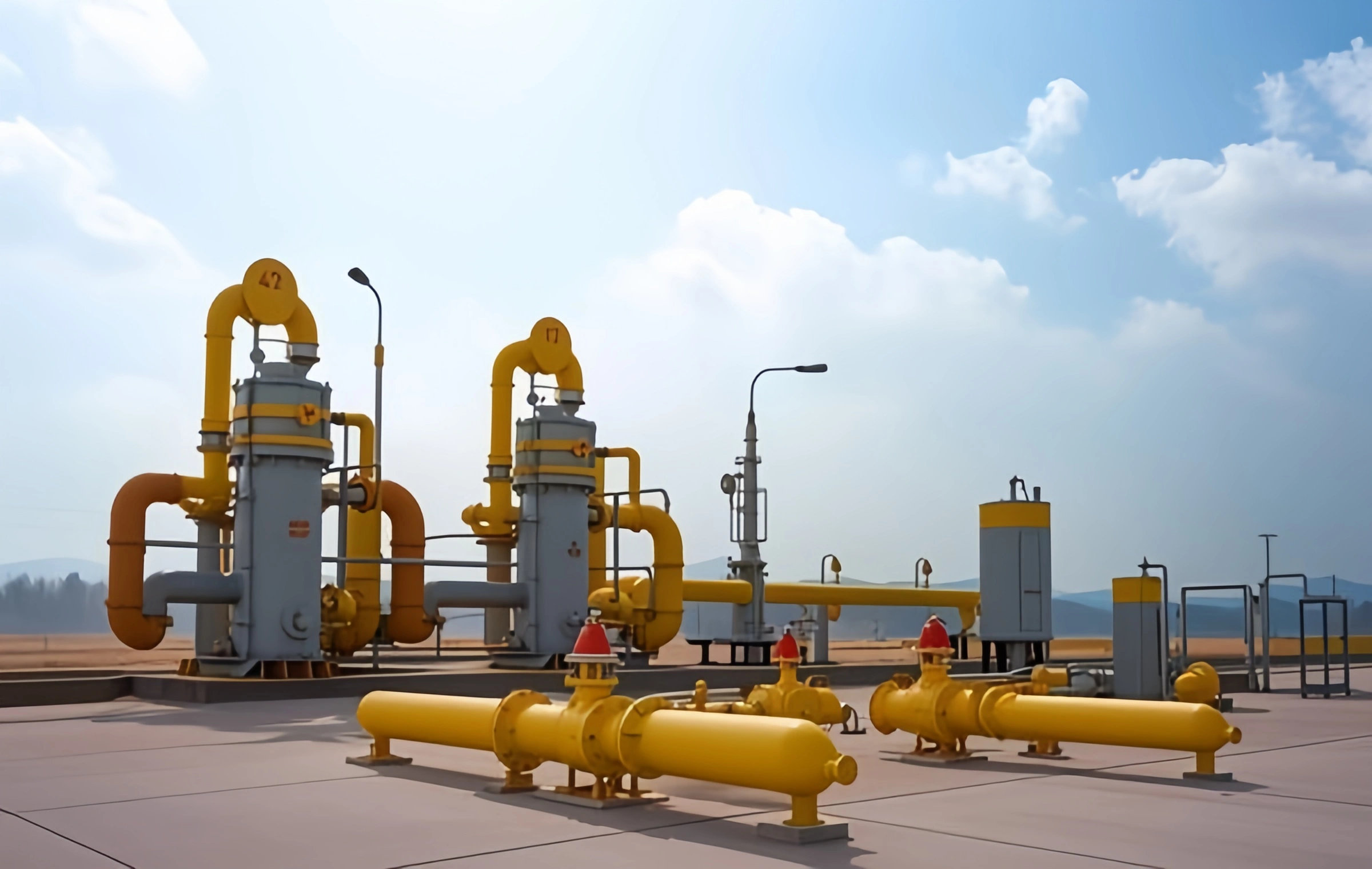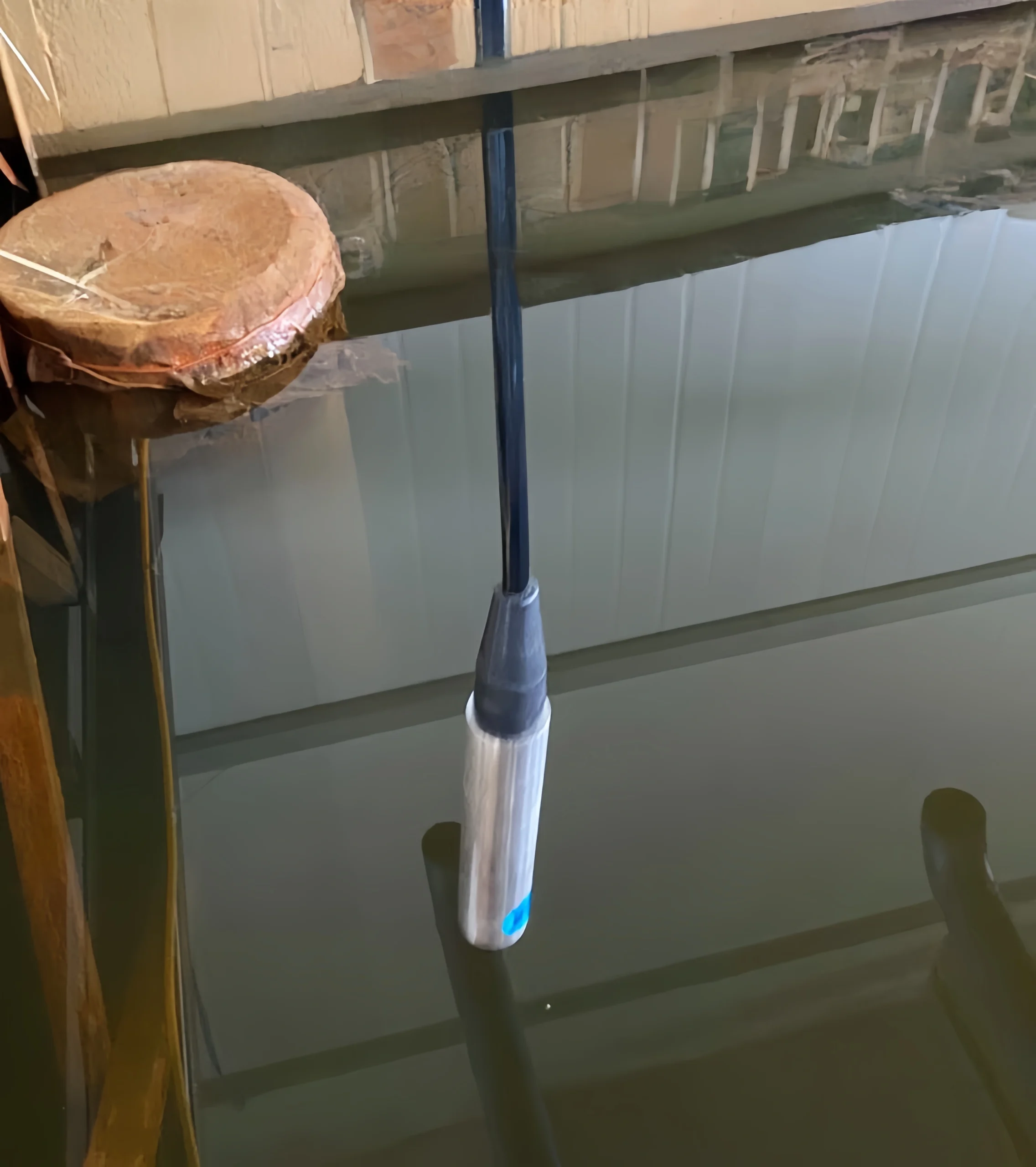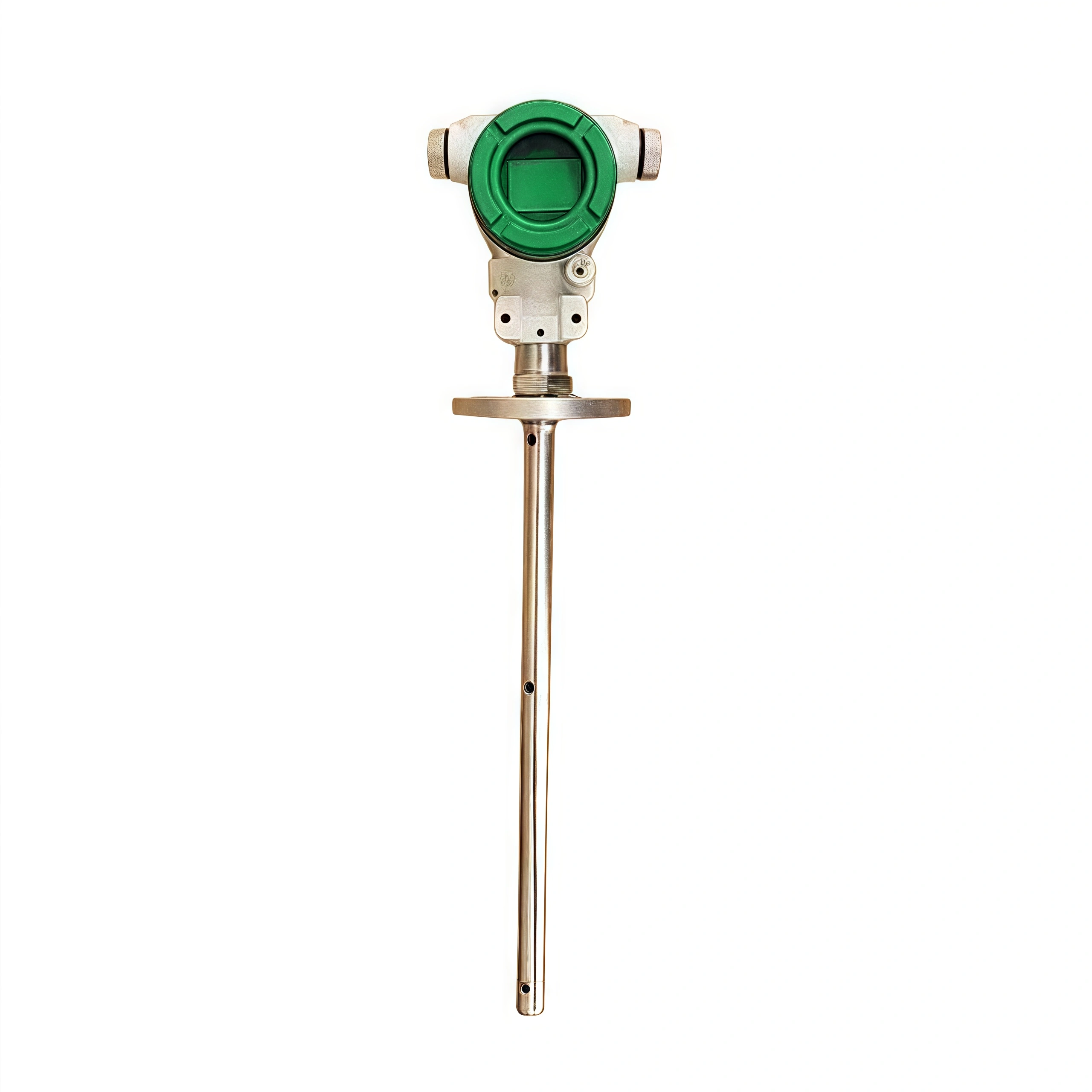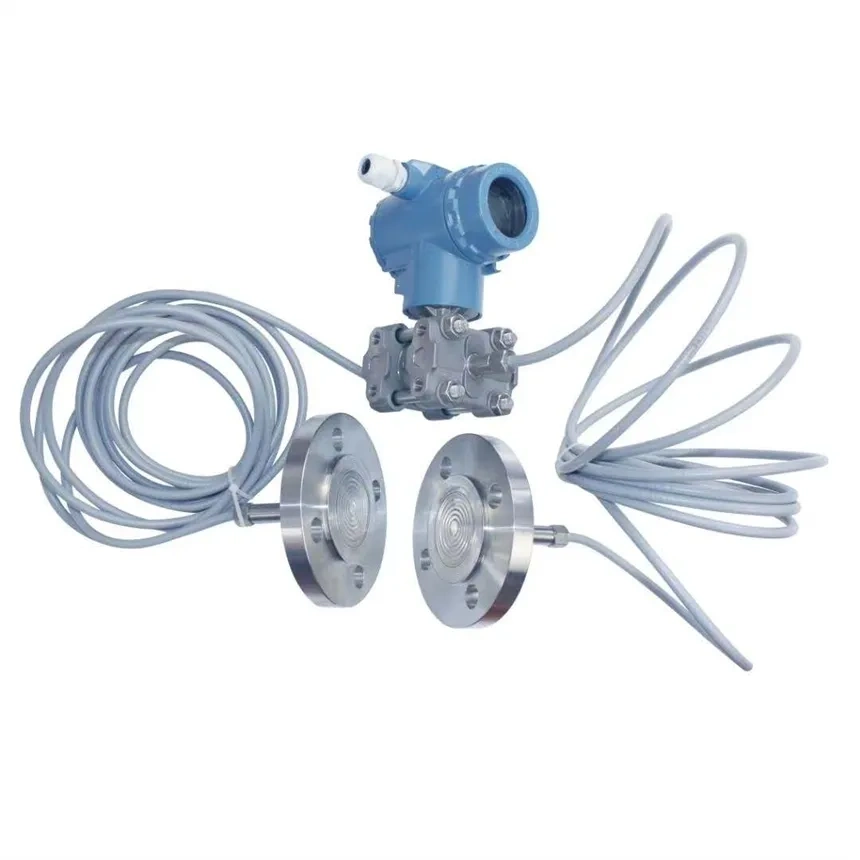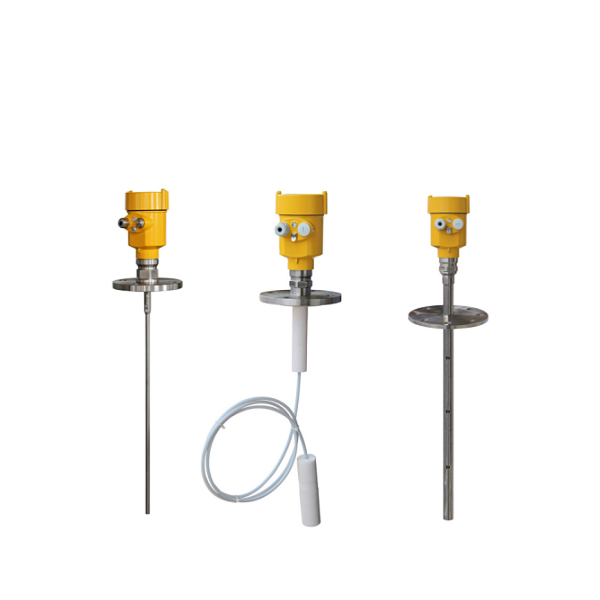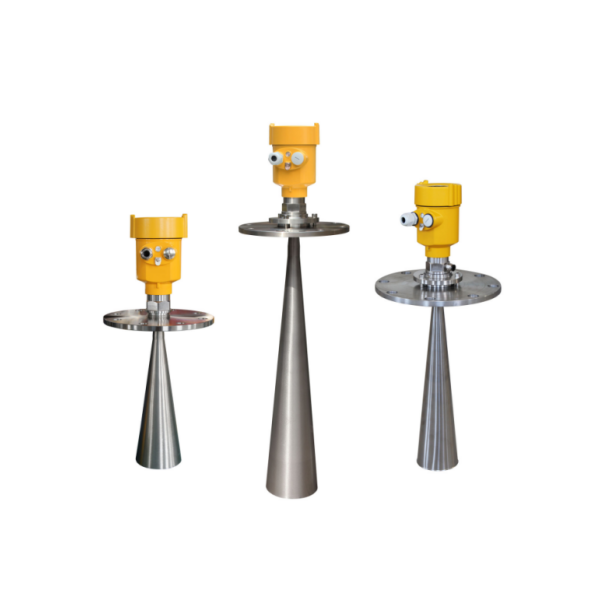In chemical plants, liquid ammonia level control is crucial. Liquid ammonia is highly corrosive and volatile, resulting in a high rate of chemical accidents. Effective control of the liquid ammonia level in storage tanks requires the selection of stable and safe level instruments. Appropriate measuring instruments can effectively eliminate safety hazards associated with the use of liquid ammonia.
Liquid ammonia storage tank level measurement mainly includes radar level sensors, differential pressure level sensors, non-invasive ultrasonic level sensors, and capacitive level sensors. Due to the flammable, explosive, and toxic properties of liquid ammonia, selecting level measuring instruments for liquid ammonia storage tanks is crucial.
The post outlines the methods for measuring liquid ammonia levels, providing you with valuable information.
What is Ammonia Tank Level Measurement?
Liquid ammonia tank level measurement refers to the technology used for monitoring the level of liquid ammonia in storage tanks. Liquid ammonia features hazardous properties such as flammability, toxicity, and strong corrosiveness. Therefore, measuring the liquid ammonia level requires customized sensors and methods.
The function of the liquid ammonia storage tank level measurement is to monitor the liquid ammonia level within the tank in real time. Accurate measurement can prevent overflows and leaks, etc.
Point Measurement and Continuous Measurement:
We have summarized that common level measurements are continuous level measurements and point level measurements. Continuous level measurement can continuously measure the liquid level and output relevant electronic signals. The measured liquid level can also be connected to data analysis systems such as PLCs and DCSs.
The other is point level measurement. It indicates whether the liquid level is above or below a specific point. When the liquid level is too high or too low, an alarm can be triggered to maintain the liquid level between the two points.
Ammonia Tank Features:
- Ammonia storage tanks are used to store ammonia gas or liquid ammonia. They are usually used in the chemical, fertilizer, and refrigeration industries. Currently, with the global pursuit of clean energy and sustainable development, ammonia, as a hydrogen energy carrier and a potential low-carbon fuel, is receiving increasing attention. Ammonia storage and transportation technology is generally receiving more attention. Generally, liquid ammonia tanks have the following characteristics:
- They are generally sealed pressure vessels. Openings cannot be made arbitrarily.
- Liquid ammonia storage tanks can be mainly classified into the following categories based on their different design features and applications: vertical liquid ammonia storage tanks, horizontal liquid ammonia storage tanks, spherical liquid ammonia storage tanks, and specially shaped liquid ammonia storage tanks.
- The material of liquid ammonia storage tanks should be high-quality steel and corrosion-resistant materials. Because such materials can withstand the corrosion of liquid ammonia and the storage pressure.
- The tank structure should avoid stress concentration caused by excessive welds and asymmetrical welds to reduce the risk of stress corrosion.
- Liquid ammonia storage tanks should be equipped with the necessary safety accessories. such as pressure sensors, safety valves, and liquid level sensors, to monitor the pressure and liquid level inside the tank in real time.
- The tanks should also undergo an airtightness test. Ensure good sealing performance and prevent liquid ammonia leakage.
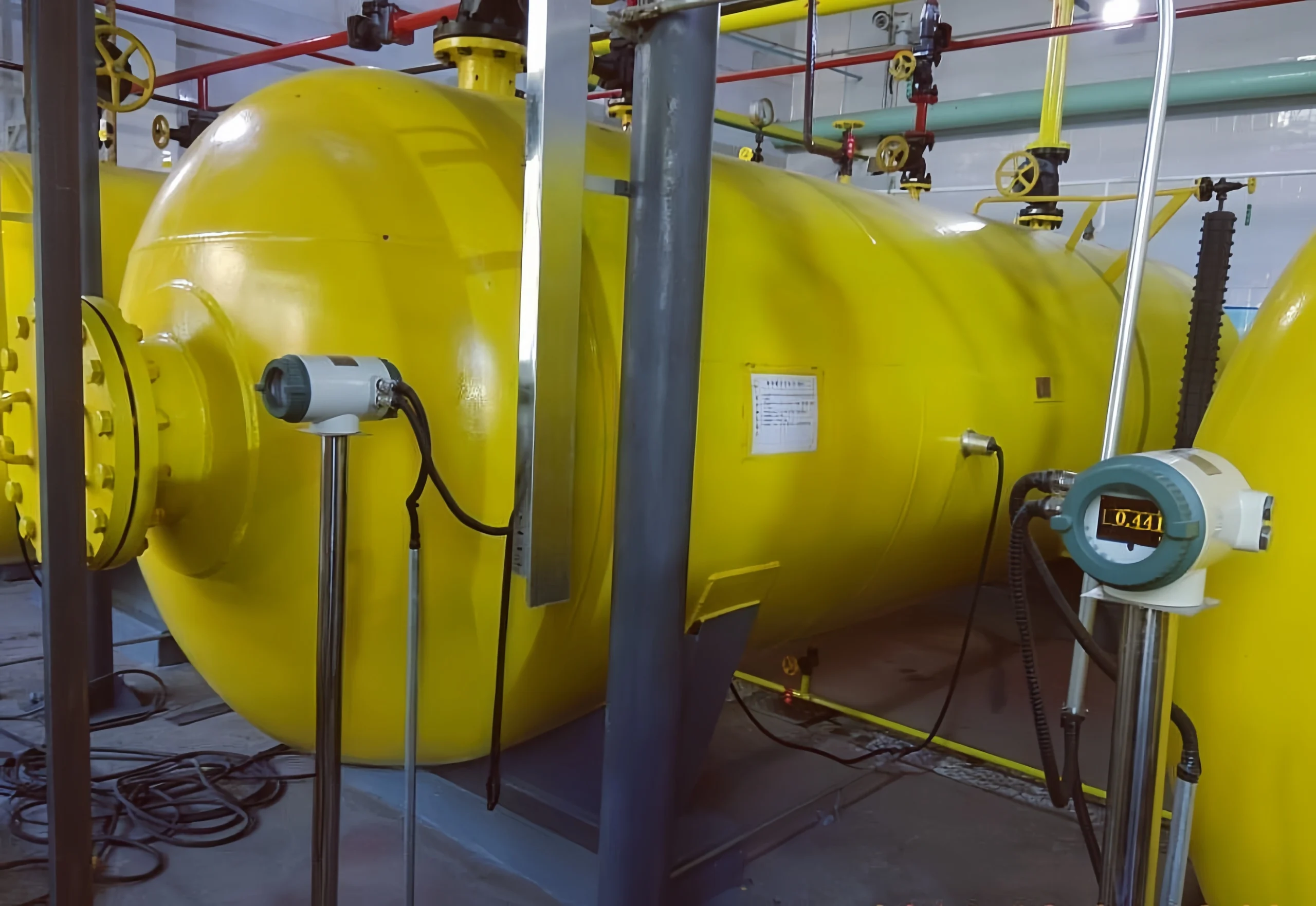
The Challenges of Ammonia Tank Level Measurement
Ammonia is a colorless, transparent gas with a pungent odor. It is easily liquefied into liquid ammonia. Ammonia is lighter than air and is extremely soluble in water. Liquid ammonia readily volatilizes into ammonia gas. When mixed with air in a certain proportion, it can explode upon contact with an open flame, with an explosive range of 15%–27%. Leaking ammonia gas can cause poisoning, irritate the eyes, lung mucous membranes, and skin, and pose a risk of chemical burns.
Liquid ammonia is an important chemical raw material. For convenient transportation and storage, gaseous ammonia is usually pressurized or cooled to obtain liquid ammonia. However, due to the low boiling point (-33.4℃), high pressure (0.8~1.5 MPa), high corrosiveness, and high toxicity of liquid ammonia, measuring its level in storage tanks presents significant challenges. Furthermore, ammonia gas easily produces dense vapors and temperature stratification. These can interfere with traditional measurement techniques.
Traditional contact or orifice-type level sensors are easily affected by the medium during measurement. Traditional measurement methods not only affect production efficiency and quality but also endanger the safety of personnel and equipment.
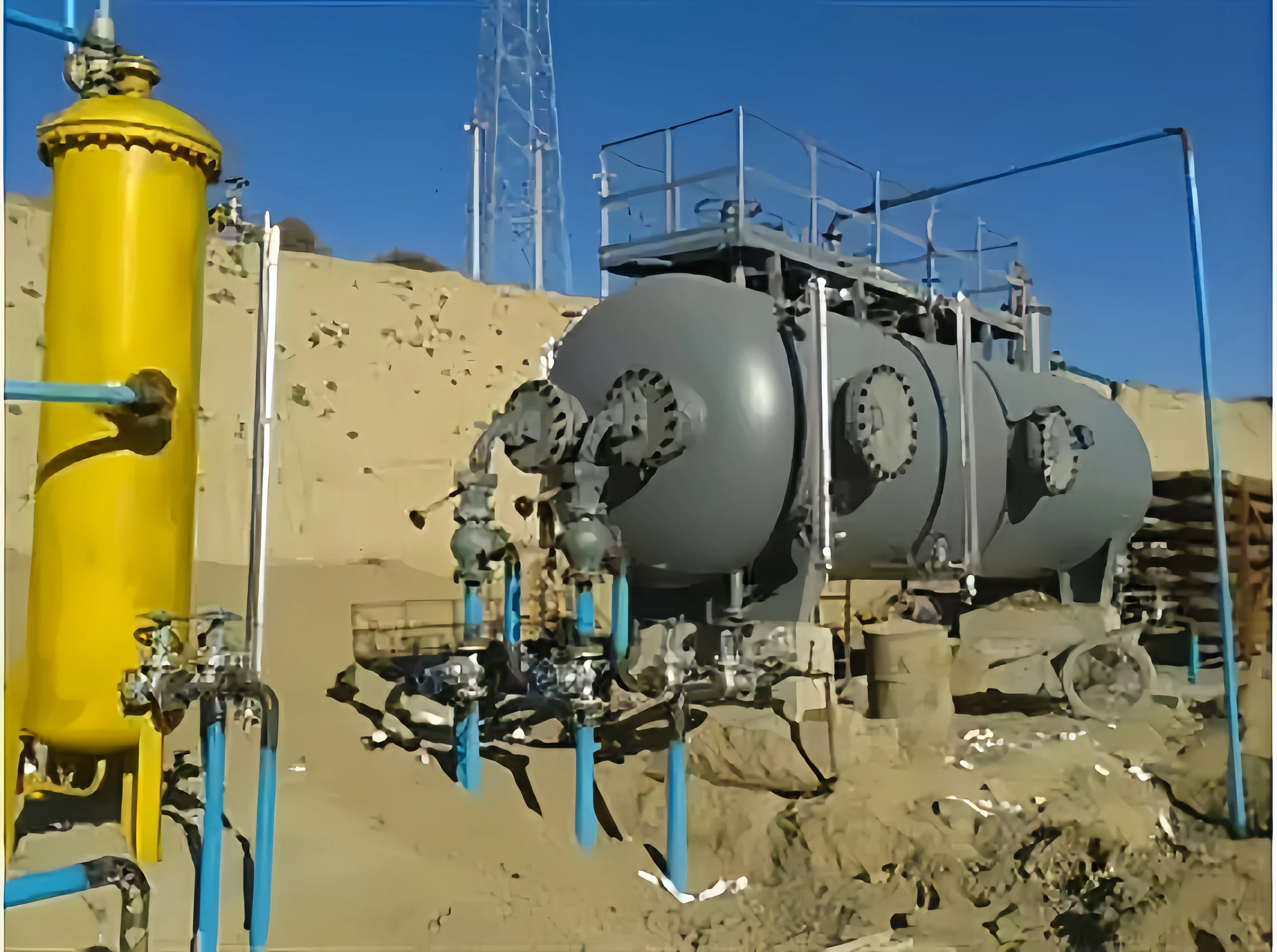
Ammonia Tank Level Measurement Methods
Generally, there are various methods for measuring the level of ammonia storage tanks. We categorize ammonia storage tank level measurement into point-level measurement and continuous measurement. Point-level measurement uses level switches to control the liquid ammonia level. Continuous measurement uses level sensors to monitor and control the liquid ammonia level continuously.
Tuning fork level switch
It is ideal for ammonia storage tanks. Tuning fork level switches have high sensitivity and strong anti-interference capabilities. Customizable fork lengths and corrosion-resistant materials make them a reliable choice for ammonia storage level measurement. Advanced design reduces false alarms under turbulent conditions, which ensures uninterrupted operation.
Tuning fork switches react rapidly to high and low level thresholds, preventing overflow or idling. Their robust protection ensures stable operation even in environments with rapidly changing ammonia vapor and temperature.
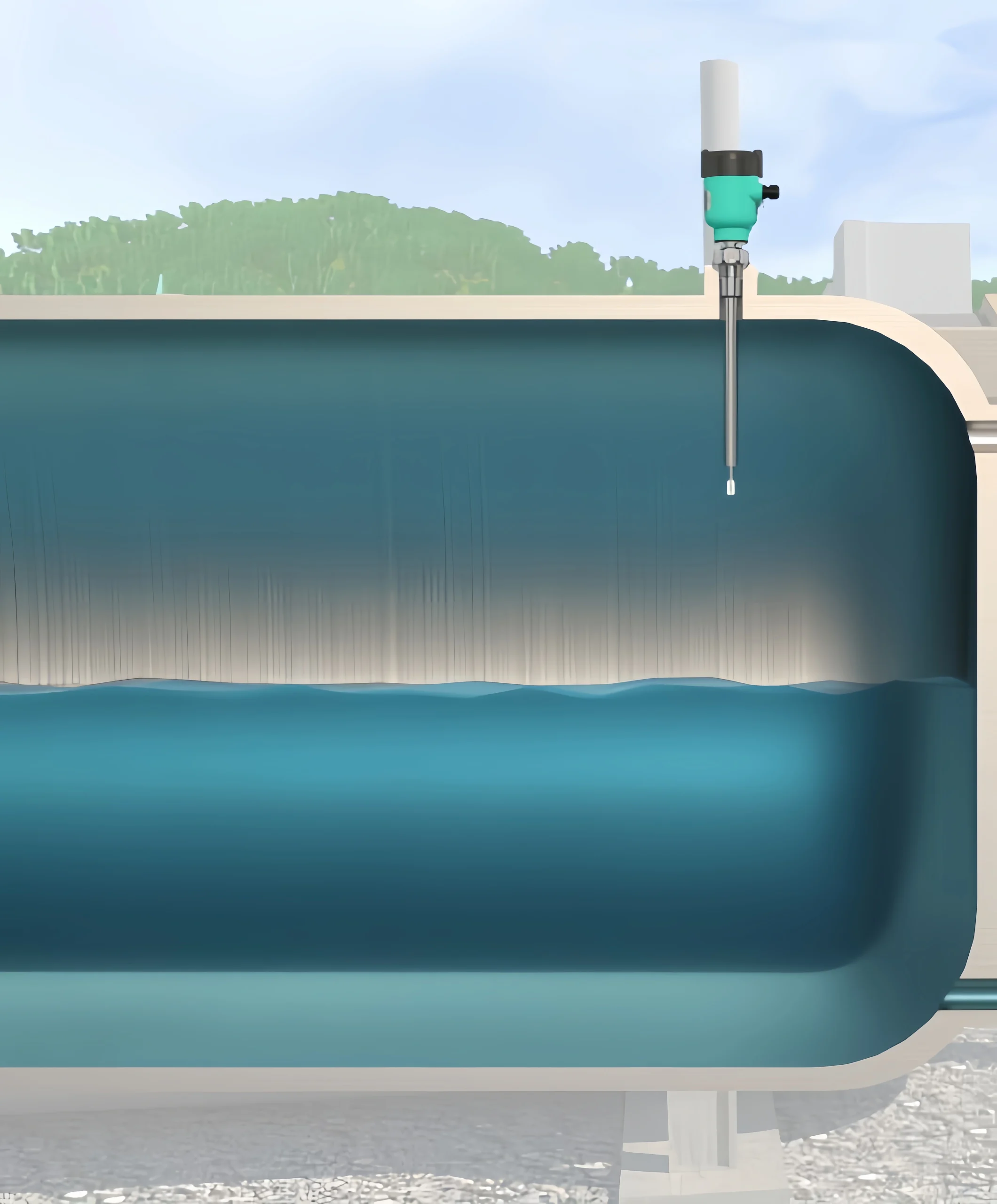
External Ultrasonic Level Switch:
The external ultrasonic level switch probe can generate a sonar pulse that can penetrate the tank. The ultrasonic pulse propagates through the tank wall. Then, the pulse is reflected. By calculating the reflection time, the level switch can display whether liquid ammonia is present at the monitoring point.
At the same time, the external level switch can output relay signals to other devices. Ultimately, this achieves system-level monitoring and control.
Ultrasonic Level Sensor:
The ultrasonic level sensor uses non-contact measurement. It is unaffected by the shape and size of the tank. The externally mounted level sensor consists of a sonar sensor (probe), a signal processor, and a display. The sonar sensor is installed directly below the outer wall of the container being measured. Its installation does not require openings in the container. It does not contact the liquid or gas inside the tank.
A sonar sensor transmits ultrasonic pulses through the container wall into the tank. The sensor then receives the echo signal reflected from the liquid surface. The signal processor calculates the liquid level based on the time difference between the echo signal and the transmitted signal. It converts the time difference into an electronic signal. This signal can also be sent to a display or host computer for display, recording, alarm, and control.
Radar Level Sensor:
The 80GHz radar level sensor is a continuous, non-contact liquid level measurement instrument. It can easily penetrate ammonia gas and provide accurate measurement results. It operates stably regardless of temperature fluctuations or pressure changes.
An IP67 protection rating and strong corrosion resistance ensure the long-term stability of the radar level sensor in ammonia storage tanks. High-frequency radar ensures accurate readings even under challenges. such as steam or gas stratification. Its narrow beam angle allows for installation in confined spaces. liquid level measurement device. Its wave can easily penetrate ammonia gas, providing accurate data. It operates stably regardless of temperature fluctuations or pressure changes.
Differential Pressure Level Transmitter:
The differential pressure transmitter works by measuring the pressure difference between two media. It converts different pressures into an electrical signal output. In the storage and use of liquid ammonia, differential pressure transmitters are typically installed in ammonia storage tanks and pipelines. It aims to monitor and control pressure changes in liquid ammonia in real time.
During liquid ammonia storage, liquid ammonia is usually stored in high-pressure ammonia storage tanks. Due to the volatility of liquid ammonia, a certain pressure difference exists between the gas and liquid. If the pressure inside the storage tank is too high or too low, it will affect the quality and effectiveness of the liquid ammonia. It may even lead to safety accidents. The function of a differential pressure transmitter is to monitor the gas and liquid pressures in the storage tank in real time.

Capacitive level sensor:
A capacitive level sensor can convert changes in liquid ammonia level into a standard current signal. It is transmitted to the control room for centralized display, alarm, or automatic control by secondary instruments or computer devices. Depending on the user’s specific operating conditions, it can be used for liquid ammonia level measurement.
The radio frequency admittance level sensor is developed based on the capacitive level sensor. It can provide more accurate measurement results. Sino-Inst’s capacitive level sensor can measure liquid levels at -196℃.
Sino-Inst Featured Ammonia Level Sensor
Ammonia Flow Measurement Methods
In addition to liquid ammonia pressure measurement, we also provide methods for liquid ammonia flow measurement. The following is a detailed introduction:
Characteristics of liquid ammonia flow measurement:
(1) The gas-liquid interface of liquid ammonia stored in the tank is generally in a state of gas-liquid equilibrium. Liquid ammonia flow measurement should avoid two-phase flow as much as possible. However, when liquid ammonia is near equilibrium, if the pressure loss is large when it flows through a flow meter, it can easily cause partial vaporization. It affects the measurement accuracy.
(2) The temperature coefficient of liquid density is large. Under normal temperature conditions, the density of liquid ammonia changes by more than 0.2% for every 1°C change in temperature. Therefore, temperature compensation is necessary for liquid ammonia measurement.
(3) High accuracy requirements. Relevant documents from the former Ministry of Chemical Industry require that liquid ammonia measurement should achieve Class 1 accuracy. Without effective measures, it is difficult to meet this requirement.
(4) The fluid is flammable and explosive. Explosion-proof instruments should be selected. Explosion-proof regulations should be followed during instrument installation, use, and maintenance.
(5) The measured medium is corrosive. Ammonia has a strong corrosive effect on materials such as copper. Therefore, the parts of the instrument that come into direct contact with the measured medium should be able to withstand ammonia corrosion. And the electronic parts of the instrument should have IP67 protection to prevent corrosive gases in the surrounding environment from corroding the electronic parts.
2. Cavitation and cavitation and prevention of fluid vaporization. In a liquid flow pipeline, if the pressure in a certain area drops below the liquid’s saturated vapor pressure, bubbles will form in that area. These bubbles accumulate near the low-pressure area, forming cavitation, a phenomenon known as cavitation. The entire process of bubble formation, growth, collapse, and material erosion is called cavitation.
To avoid cavitation and vaporization during liquid ammonia flow measurement, the following design and installation methods are effective:
- Select instruments with low pressure loss.
- Choose an appropriate installation location.
- Install the regulating valve after the flow meter.
- Increase the subcooling depth.
For accurate measurement of liquid ammonia tank flow, we recommend you choose turbine flow meters, vortex flow meters, volumetric flow meters, and Coriolis mass flow meters.

Methods for Measuring Pressure and Temperature in Liquid Ammonia Storage Tanks
There is a specific relationship between the pressure and temperature of liquid ammonia. Under constant volume conditions, as the temperature of liquid ammonia increases, the pressure also increases accordingly; conversely, the pressure decreases as the temperature decreases. This relationship can be calculated using the ideal gas law:
PV=nRT
Where:
P represents pressure,
V represents volume,
n represents the number of moles of the substance,
R represents the gas constant,
T represents the absolute temperature.
Accurate and continuous monitoring of the internal pressure and temperature is crucial during the operation and management of liquid ammonia storage tanks. Sino-Inst is committed to ensuring the safe transport and operation of liquid ammonia tanks. By employing appropriate sensors and control systems, we can monitor and regulate the pressure and temperature of liquid ammonia storage tanks, preventing safety accidents and improving industrial efficiency. Precise monitoring of pressure and temperature can also prevent accidents caused by excessive pressure or temperature in the liquid ammonia storage tank.
We recommend ammonia pressure sensors to measure the pressure of liquid ammonia. Due to the complexity of operating conditions, you can contact us. Our professional engineers can recommend a suitable solution for you. For ammonia tank temperature detection, explosion-proof platinum resistance thermometers are generally used for remote transmission, preferably armored resistance thermometers with sheaths. This facilitates replacement. The installation location of the temperature sensor should ensure that the temperature of the liquid phase can be measured even at the lowest liquid level. Because it is easy to observe and maintain.
Read More about: PT Compensation of Flow Measurement
What is the normal range for ammonia levels?
The normal liquid ammonia level range is generally controlled within 30% of the tank volume as a safe operating baseline. It should not exceed 85% of the tank volume. The specific level needs to be determined comprehensively based on the total tank capacity, process requirements, and safety regulations. Some tanks may have a minimum level set based on factors such as pump inlet height and structure. A normal liquid ammonia level needs to be ensured the pump operates normally, and leave a safety margin.
What unit is used to measure ammonia?
The unit for the toxicity of liquid ammonia is ppm;
The unit for the explosiveness and flammability of liquid ammonia is LEL;
Common units for measuring liquid ammonia levels mainly include units of length and units of volume.
Length Units:
Meter (m): Used to indicate liquid level height, such as the value displayed by a level sensor;
Millimeter (mm): Used for more precise liquid level measurement;
Volume Units:
Cubic meter (m³): Used to indicate the volume of liquid ammonia in a storage tank;
Liter (L): Liters are also used as a volume unit in some cases;
Percentage (%): Used to indicate the percentage of liquid level relative to full capacity;
Ton (t): Although the level sensor itself does not directly display the ton, it can be converted to a mass unit by calculating the liquid level height and density.
How do I tell if my ammonia levels are high?
Ammonia storage tanks often have a maximum liquid level mark, which should generally not be exceeded. This is to prevent overfilling of ammonia in the tank, which could lead to overflow or leakage accidents when the temperature rises or the pressure changes.
When the ambient temperature rises, the volume of ammonia expands. If the liquid level is too high, it may cause a sharp increase in tank pressure, even damaging the tank. The determination of the maximum liquid level usually considers factors. such as the tank's design capacity, safety factor, and possible temperature and pressure changes.
In general, the maximum liquid level is set below a certain percentage of the total tank capacity, about 80%-90%.
All in all, there are many factors to consider when measuring the liquid ammonia level. If you are struggling with liquid ammonia level measurement, please contact us immediately.
Sino-Inst has many successful liquid ammonia measurement projects. We have professional technicians who can provide you with free technical support.



